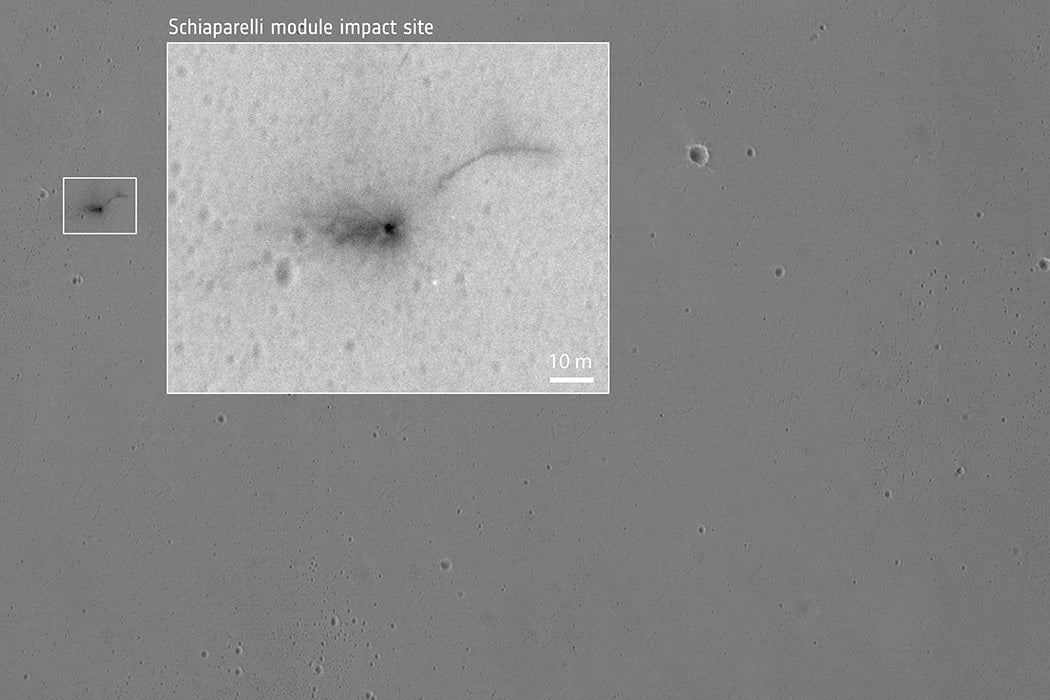Recently, the ESA ExoMars mission lost contact with its Schiaparelli Martian Lander during its descent. Images showed that the lander crashed—hard—and exploded upon impact. The main mission of sampling atmospheric gasses continues without the lander. But the lander’s destruction is hardly unprecedented.
Despite some spectacular successes, Mars missions have a long history of failure. Four out of the first five attempts, all by the USSR, failed to leave orbit, and the 5th lost communication. The first U.S. attempt, Mariner 3, reached Mars but failed to complete its mission due to mechanical failures. So many initial attempts to reach Mars were unsuccessful that some thought that Mars was cursed. Things finally improved when Mariner 4 successfully flew past Mars in July 1965, followed by 3 additional successes (and one failure).
In 1971, the first landing was attempted, again by the USSR. Thus began a long tradition of wrecks. The 1971 mission entered Mars orbit, but the lander crashed. That same year, a Soviet lander touched down on Mars but died after just 20 seconds. In all the USSR made 5 early attempts to land on Mars; all failed. The first successful landing occurred on July 20, 1976, when Viking 1 began its groundbreaking mission. Put off by the high costs of failed missions, planners started prioritizing trips to other planets, e.g. Saturn or Venus, that did not require a lander.
What went wrong? Mars was one of the first destinations for unmanned probes, so many of the earliest failures can be chalked up to the interplanetary travel learning curve. Reaching the surface of Mars, however, presents unique challenges; there is a reason Mars has a reputation as a graveyard for spacecraft. The Mariner missions demonstrated that the Martian atmosphere was very thin, providing very little friction to help slow a space craft. At the same time, Mars has plenty of gravity; objects entering the atmosphere plummet to the ground. The combination of strong gravity, thin atmosphere, and the high velocity at which probes begin their descent makes it very difficult to slow a lander sufficiently to avoid crashing.
The engineering challenges required to circumvent these difficulties were substantial; the rover missions eventually utilized a combination of parachutes, retro-rockets, and airbags to cushion the final landing. The larger curiosity rover was lowered to the surface by a hovering craft. The ingenuity required for a successful landing was such that some engineers gripe about the excitement directed toward the rovers’ incredible discoveries while their contributions are unheralded.
As the Schiaparelli crash proves, reaching Mars is never a sure thing. To date, out of 49 Mars missions, only 20 have been completely successful. At least 7 probes have unintentionally crash-landed on the surface, joined by a few that were deliberately crashed and a few derelict landers. The repeated crashes have even raised concern about potential contamination from Earthly bacteria. Nevertheless, despite the risks, the potential for great discoveries remains.







